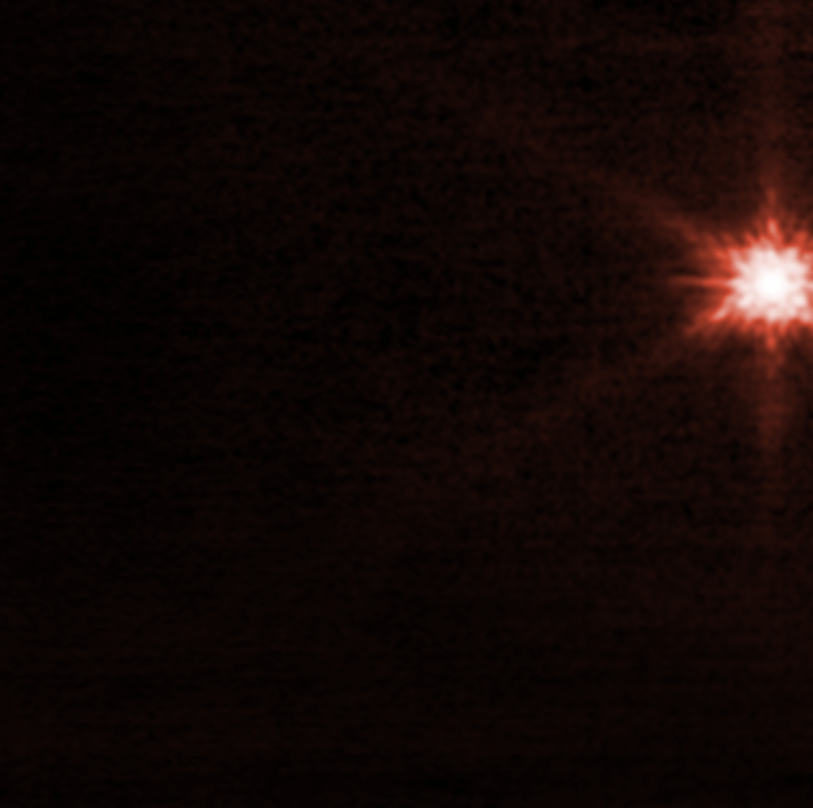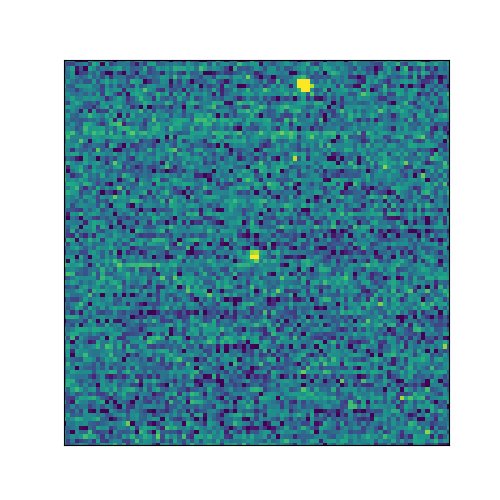In September, the James Webb Space Telescope observed as NASA’s Double Asteroid Redirection Test (DART) intentionally smashed a spacecraft into a small asteroid, in the world’s first-ever in-space test for planetary defense. Today, we hear from Stefanie Milam, Webb’s deputy project scientist for planetary science at NASA’s Goddard Space Flight Center, about how the Webb team worked to capture these one-of-a-kind observations.
To observe NASA’s DART mission impact event, Webb had to exceed its required and tested observatory capabilities. Before launch, astronomers had plans to observe solar system objects with Webb, which meant it was designed to track targets that move with respect to stars and galaxies in the distant universe. With Webb being a large boat-shaped observatory with its large sunshield and prominent mirror standing on top resembling a sailboat, this was considered a challenge and something we wanted to both simulate before launch, as well as test rigorously during commissioning. We had to make sure that we could track these moving objects with the same precision that we have when pointing at fixed targets. Generally, using a special camera called the Fine Guidance Sensor (FGS), Webb locks onto a so-called guide star to stay pointed at its target with great precision. Moving target observations are executed by moving the guide star at the precise rate of the moving object inside the FGS field of view. This ensures the science target remains stationary in the specified science instrument. This of course also means the background field of stars and galaxies drift in the moving target images, not unlike taking a picture of a race car while turning the background spectators into a streaky blur.

at 7:14 p.m. EDT, Sept. 26, through five hours post-impact. The success of these observations was dependent on implementation of faster moving-target tracking rates. Image Credits: Science: NASA, ESA, CSA, Cristina Thomas (Northern Arizona University), Ian Wong (NASA-GSFC); Joseph DePasquale (STScI)
We worked diligently with the FGS team and the observatory flight software engineers to ensure that pre-flight simulations of the observatory demonstrated a tracking capability with a speed limit originally set at the rate of Mars (30 milliarcseconds per second or the width of a full moon in just under 17 hours!). Webb launched with this notional speed limit. But solar system scientists – especially those who study fast-moving small bodies like asteroids, comets, and interstellar objects – really wanted to observe objects that moved faster than Mars. Of course, we could observe these objects when they are further away from Earth and the Sun and therefore moving slower, but that is not always aligned with when they are the most interesting, e.g., when a comet undergoes an outburst.
So, we set out to not only confirm that Webb could track at the pre-flight speed limit during commissioning, but also to show that the observatory is capable of much faster tracking rates. We started out slow with our first asteroid, 6481 Tenzing, at a rate of only 5 milliarcseconds per second (mas/s) (or 18 for other asteroids. All of these tests were successful, and we confirmed that Webb was really good at tracking moving objects at a a rate of up to 67 mas/s (241ʺ/hr).
This was great news for all solar system scientists planning to use Webb!
Our next challenge was upon us when the Guaranteed Time Observation Program to study Didymos during the DART mission impact (program 1245, PI: Cristina Thomas at Northern Arizona University) was being planned. Program coordinator, Tony Roman at the Space Telescope Science Institute wanted to try to track the asteroid with Webb during the impact of the DART spacecraft (at over 100 mas/s or 360ʺ/hr) with Webb. According to Roman, “Tracking at a rate slower than Didymos’ actual motion would have resulted in blurred images. If we could track at Didymos’ actual rate, that would make the most of this unique opportunity.” This was far faster than our fastest rates from commissioning, but the project was convinced we should try this in order to support another NASA mission, in conjunction with simultaneous observations with the Hubble Space Telescope. Tests were set up on the flight simulator to verify the software and hardware could handle these super-fast tracking rates. The system was tweaked several times to optimize the performance, and to ensure that we could track an object moving that fast. Once convinced by the simulator results, we planned some engineering tests on the spacecraft with two observations of near-Earth asteroid 2010 DF1 at rates of motion that were (324 and 396ʺ/hr). This was the fastest and brightest asteroid in Webb’s field of regard we could test on near the DART impact speed. If we could successfully track this asteroid, we knew we could track the DART impact event. We were down to the wire with tests being done only two weeks prior to the date of the DART impact into Dimorphos!

Observations to monitor the DART impact were prepared and uplinked to the observatory; at the scheduled time, just prior to the impact, the series of observations began executing – and were successful. With data spilling into the archive for analysis, Ian Wong of NASA Goddard completed a quick, but thorough, analysis, which verified the super-fast rates were successful! We had demonstrated that we could plan for an event like the DART impact with Webb, and had beautiful results to show. While the analysis of the impact data , we have now confirmed that we can track and observe targets over 100 mas/s (360ʺ/hr) with Webb. However, we will likely not use the high rates routinely. While successful, they were challenging to plan and schedule. Guide stars only stay within the FGS field of view for a short time at those speeds. That means we would have to use multiple guide stars to support a longer observation, and changing guide stars introduces complexity and inefficiency. In the end, the new speed limit set for Webb is now 75 mas/s for future observations, but special permission may be requested for rates up to 100 mas/s.
– Stefanie Milam, Webb’s deputy project scientist for planetary science, NASA Goddard
